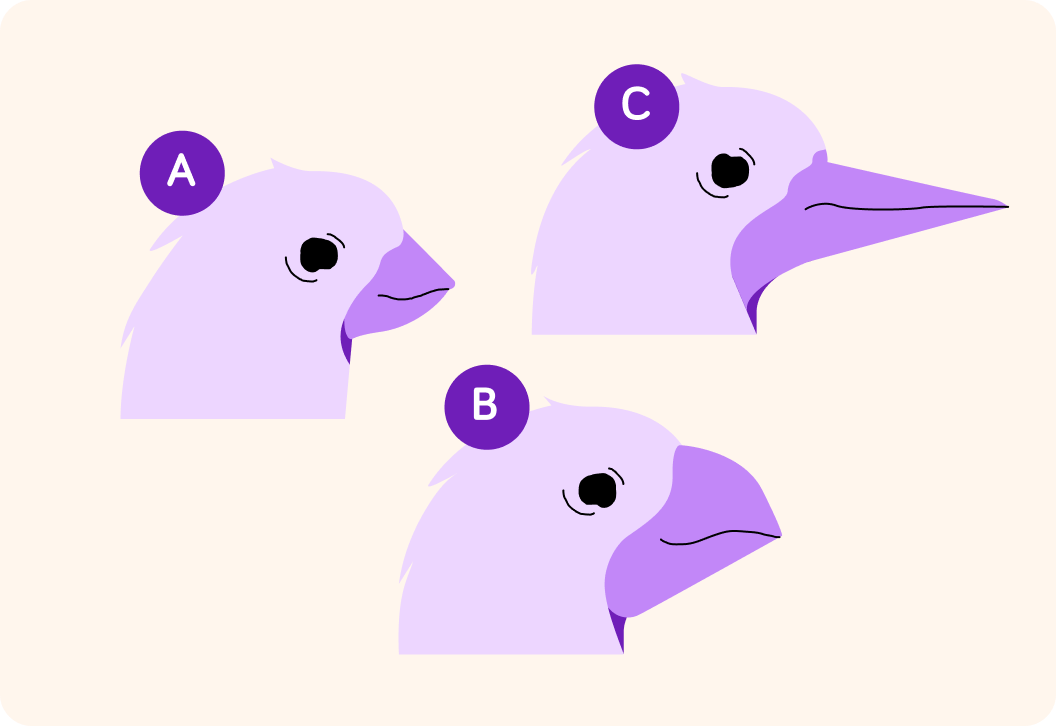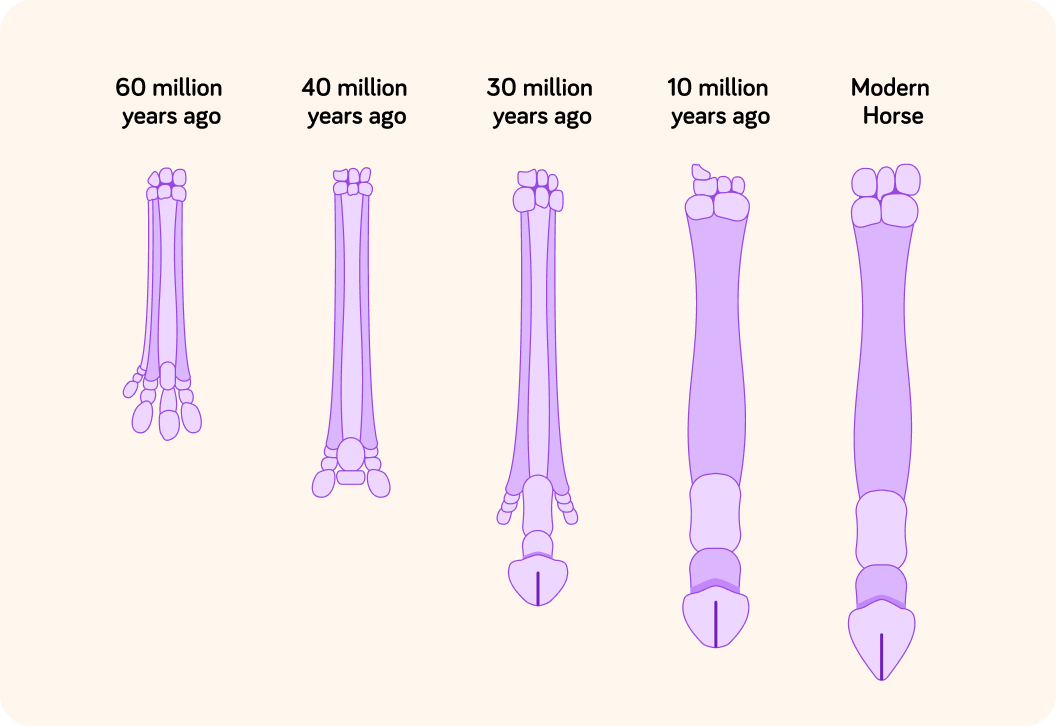YOU ARE LEARNING:
The Theory of Evolution

The Theory of Evolution
The theory of evolution by natural selection was a revolutionary idea by Charles Darwin, in his book 'On the Origin of Species'.
"The Origin of Species by Natural Selection " is the most important book ever written about evolution, but do you know who wrote it?

Look closely at the three birds in this image. They are all species of finches.
Species A lives on the mainland of South America.
Species B and C both live on a set of isolated islands called the Galapagos Islands, 1000 Km from the mainland of South America.

Look at finch B and compare it to finch A. Finch A eats small seeds. What type of food might finch B eat?
A) Large seeds B) Insects C) Soft fruits D) Dead animals (scavenger)
Answer A, B, C or D


Finches everywhere in the world have bills like finches A and B, except on the Galapagos Islands. There, there are only finches with bills like finch C.
This was what Charles Darwin observed on his visit to the Galapagos Islands in 1835.

Darwin suggested that finch C's bill changed from a type A bill, allowing it to eat insects. What do you think was Darwin's explanation for why this happened?
A) The islands are isolated, so the finches' bills changed over generations to be better able to eat insects. B) By reaching for insects instead of seeds the finches' bills grew longer over their life times.
Answer A or B.


This picture shows the fossils of horses' legs over millions of years.
Use your power of observation to spot what has changed over this period of time. Most good science starts with observation!

What patterns of change do you observe in the fossil record of the evolution of the horse's leg over the last 60 million years?

According to Darwin's theory, all modern horses had a common ancestor 60 million years ago! Some of those ancestors had longer middle toes than others. What word do you think Darwin might have used to describe that some individuals in a species was different to others?

So 60 million years ago, the horses with longer middle toes could run faster, get more food and breed better. Charles Darwin had a certain term to describe this. Do you know which one?

So over millions of years the "fitter" horses passed the longer middle toe down to their offspring and the feature became more and more common. So that is how the form of the modern horse leg came to be.
What does the term survival of the fittest mean in the context of evolution by natural selection?

The evolution of the giraffe.
Millions of years ago, the ancestor of the giraffe probably looked like a deer. It was a herbivore with a short neck, that ate grass and leaves.

If some individuals had longer necks than others they could reach more leave higher up the trees, is this an advantage or a disadvantage?


Survival of the fittest.
Those with longer necks got more food, were more likely to be healthy and more likely to breed successfully.

For evolution to occur those with advantageous features (the fittest), must breed successfully, why is this important? Choose the 2 best answers.

You can select multiple answers
To sum up, these are the key steps for natural selection in evolution:
1) More individuals are born than can survive.
2) Each individual is different.
3) Individuals best adapted are more likely to live. 4) Individuals better suited to the environment are more likely to breed. 5) Advantages are passed on from generation to generation. 6) More advantageous fractures become more common over time.
Humans evolved from an ape-like animal that had a tail. How long do you think it took these pre-humans to loose this feature?

Charles Darwin suggested the idea of Evolution by Natural Selection in his book, "The Origin of Species", which was published in 1859.
Darwin's ideas were not popular in 1859! Choose all the reasons you think this might have been the case.

You can select multiple answers
